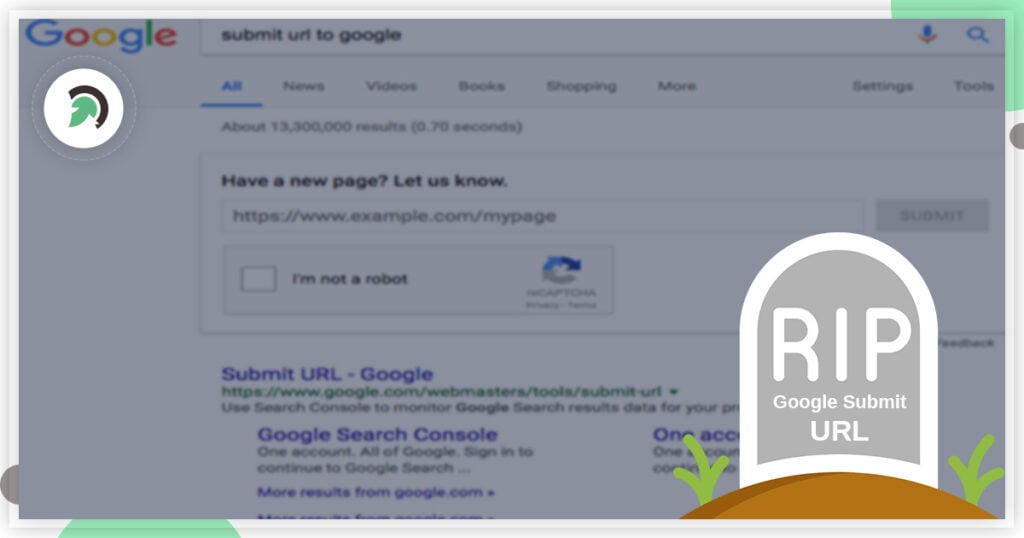Google’s URL submit Tool is DEAD!
Google has officially retired its Public URL Submission Tool, marking the end of an era for SEOs and digital marketers who relied on it for quick indexing. Once a go-to solution for submitting URLs directly to Google’s index, the tool has now been discontinued to prevent misuse.
So, what does this mean for your website’s indexing strategy? In this article, we’ll uncover the 5 biggest changes that came after Google killed its URL submission tool and exactly what you need to do now to ensure your content still gets discovered fast.
5 Big Changes After Google Killed Its Public URL Submission Tool
1. No More Instant Manual Indexing
Previously, SEOs could manually submit any page — even third-party or competitor URLs — for faster indexing. That manual option is now gone, meaning Google controls crawl timing entirely.
Impact: New pages might take longer to appear in search results unless you use approved submission methods.
2. Google Prioritizes Quality Over Quantity
Google’s decision reflects its broader shift toward content quality and crawl efficiency. Instead of manually requesting indexing, the algorithm now favors organic discovery through sitemaps, backlinks, and meaningful content updates.
What It Means: Thin, low-value pages are less likely to be indexed at all.
3. Search Console Becomes the Main Gateway
Google now directs all indexing requests through the Search Console’s “URL Inspection” tool and sitemaps.
Steps to Request Indexing:
- Log in to Google Search Console.
- Select your verified property.
- Use “Inspect any URL.”
- Click “Request Indexing.”
You can submit up to 10 URLs per day.
Tip: Keep your sitemap updated for automatic indexing of large batches.
4. Abuse Prevention Takes Center Stage
The public tool had been heavily abused for spam and third-party submissions. SEOs were using it to force indexing of backlinks, social URLs, and competitor sites. By removing it, Google has strengthened safeguards to ensure indexing requests only come from verified website owners, not external parties.
5. SEO Strategy Now Depends on Content Value
Google is signaling a clear message: “If your content adds value, we’ll find it.” Instead of chasing indexing hacks, brands must focus on content quality, crawl optimization, and link signals.
Action Step: Publish high-quality, frequently
What You Need to Do Now
If you relied on the Public URL Submission Tool for fast indexing, here’s how to adapt your SEO workflow moving forward:
- Use Search Console Regularly: Submit key pages manually and monitor indexing status.
- Keep Your XML Sitemap Updated: Add new URLs immediately and resubmit the sitemap via Search Console.
- Leverage Internal Linking: Link to new pages from high-traffic, frequently crawled URLs to trigger faster discovery.
- Build Backlinks from Reputable Sources: Google crawls new pages faster when they’re linked externally.
- Monitor Crawl Stats: Use “Crawl Stats” in Search Console to identify delays or crawl budget issues.
What the Public URL Submission Tool Did
This tool was widely used by SEO experts and Digital Marketers to push website pages for faster indexing on Google’s search index. It was an easier and a time-optimized option as compared to submitting the sitemap or using the URL inspection tool.
It was a simple 3 step procedure
- Visit Google’s Submit URL page
- Type the URL in the ‘URL’ box
- Enter captcha and submit
Why Google Removed the Tool
The public URL submission tool was used by website owners and SEO experts to get their web pages indexed on the search index. They were also using this tool for pushing their page rank faster by submitting third party URLs to get their link indexed, for getting their social media pages indexed and even for spamming competitor’s websites.
The strategic decision was the result of a well thought out process. After detecting the misuse of the tool for indexing bulk URLs, Google was impelled to discontinue it. As tweeted through official Google Webmaster account, “We’ve had to drop the public submission feature, but we continue to welcome your submissions using the usual tool in the Search Console and through sitemaps directly.”
Google’s Recommended Alternatives
With the removal of the Public URL Submission tool, Google is now instructing people to ‘Fetch as the Google’ option in the Search Console. Website owners can also use the Sitemap files to get their web pages indexed.
Steps for submitting URL for indexing through search console:
- Login to Webmaster and verify your website property
- Perform a fetch (or fetch and render) request for a URL using Fetch as Google.
- Click on the “Request indexing” option.
- Choose out of crawl the single URL or crawl URL plus its direct links options.
- Click “Submit”.
A website owner can submit upto 10 URLs per day.
Final Thoughts: Focus on Value-Driven Indexing
Google’s decision to retire the Public URL Submission Tool underscores a major shift from manual submissions to algorithmic discovery and content authority.
Instead of chasing instant indexing, focus on publishing high-quality, original, and user-focused content. When your pages add real value, Google will find and index them naturally.
Need help optimizing your website for faster indexing and better SEO visibility? Contact EvinceDev, a trusted SEO and digital marketing company, to implement modern indexing and content optimization strategies that deliver results.
